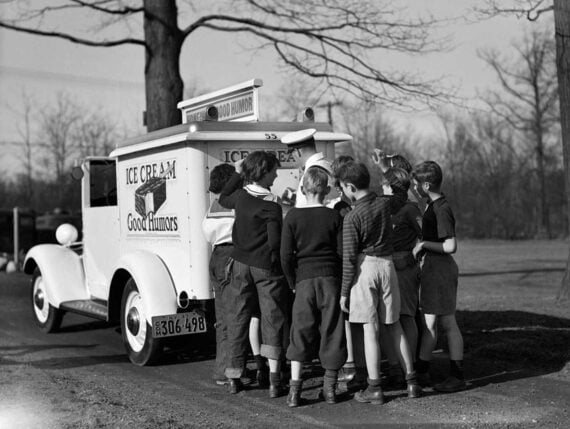Eating on the go — it’s been a thing forever (a snack stall was even recently discovered in the ruins of Pompeii). But the next time you’re getting hangry standing in line at a barbecue truck and need the person in front of you to choose their meat and three in a hurry, take a moment to consider how lucky we are to live in an era of such good and plentiful food trucks. The history of mobile food in America dates back to the 17th century and has some surprising (and yummy) turns along the way.
Related: 45 Food Trucks Worth Following in Every Major City
1691: The First Food Trucks
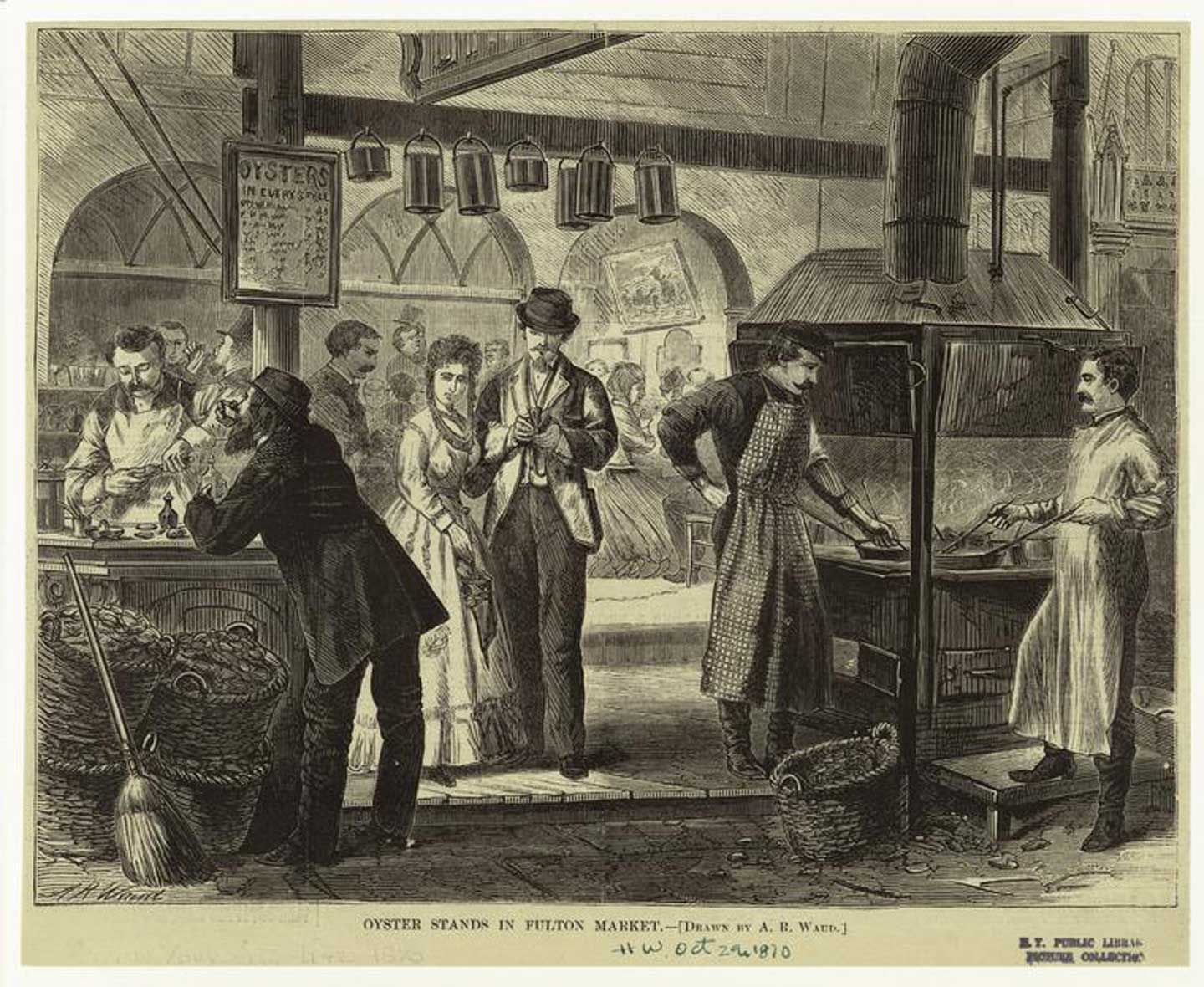
This is when New Amsterdam (which became New York City) began allowing street vendors to sell ready-to-eat food. The vendors are so popular that public markets complain, leading to a city ordinance proclaiming street vendors could open their stalls only two hours after public markets opened. The most popular street food at the time was oysters, often roasted over a fire. While oysters may seem like a pricey luxury today, at the time oysters grew in abundance in the harbor surrounding New Amsterdam, so they were cheap and plentiful. Other popular street foods sold by vendors included hot corn, buns, and peanuts.
Related: Food Halls and Markets That Offer a Taste of Something for Everyone
For more fun food stories, please sign up for our free newsletters.
1866: The Chuckwagon Goes Out on the Range
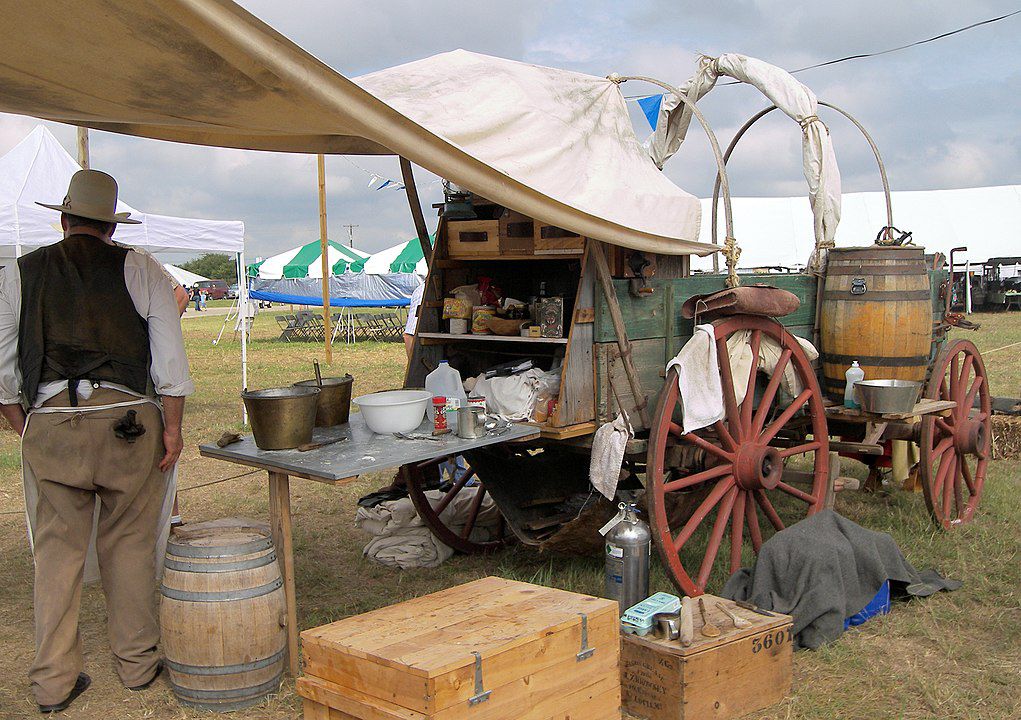
The chuckwagon is invented by Charles Goodnight to feed cattlemen and wagon trains traversing the Old West. It’s thought that Goodnight, a Texas cattle rancher himself, tricked out an Army wagon with drawers and cabinets stocked with kitchenware and food supplies. Chuckwagon cooks could dish up grub for an entire crew with their Dutch ovens. Most meals made on the trail were some sort of biscuits and beans, but every now and again the cowboys were able to have a bit of dessert, according to the National Cowboy & Western Heritage Museum.
Related: The Evolution of the RV, From Covered Wagon to Winnebago
1872: The First Horse-Drawn Diner
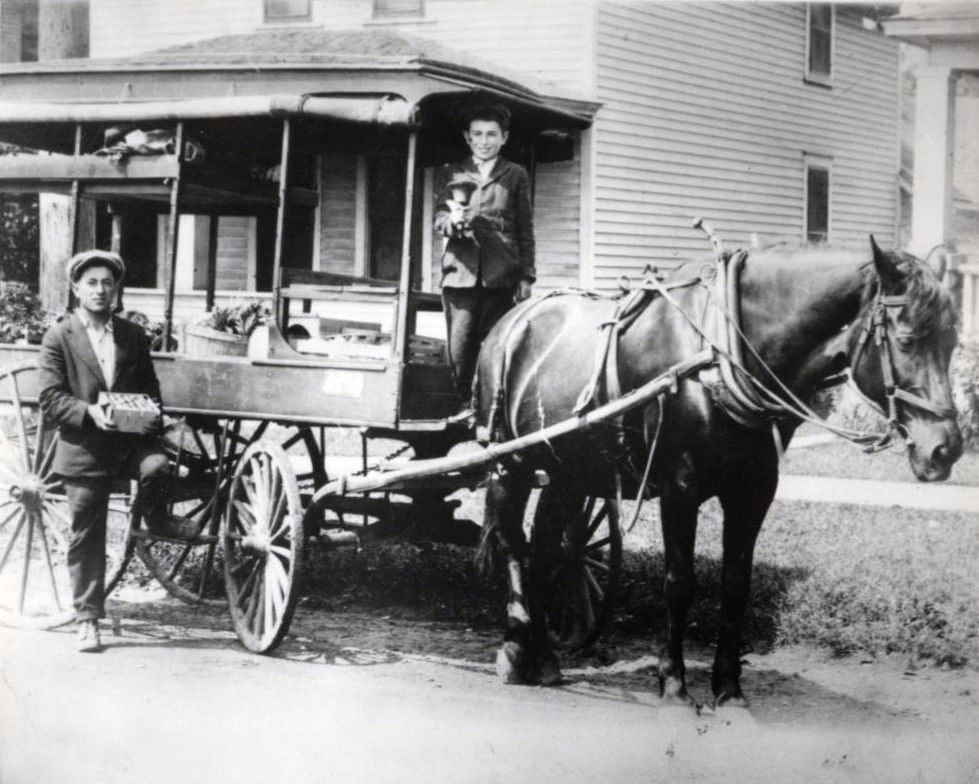
The first diner is actually a food truck in Providence, Rhode Island. Local entrepreneur Walter Scott sells food out of a horse-pulled wagon to the workers at a local newspaper. The wagon has windows on both sides of the wagon to accommodate hungry office workers on their lunch break.
Meanwhile, in the small pueblo of Los Angeles, vendors were using horse-drawn wagons to sell a variety of foods, including everything from sandwiches to oyster cocktails, and most commonly, tamales. These “tamaleros” as they were known, were mentioned in newspapers as far back as the 1870s, but were likely around before that.
Related: The Best Hole-in-the-Wall Diner in Every State
1894: Enter Hot Dog Carts
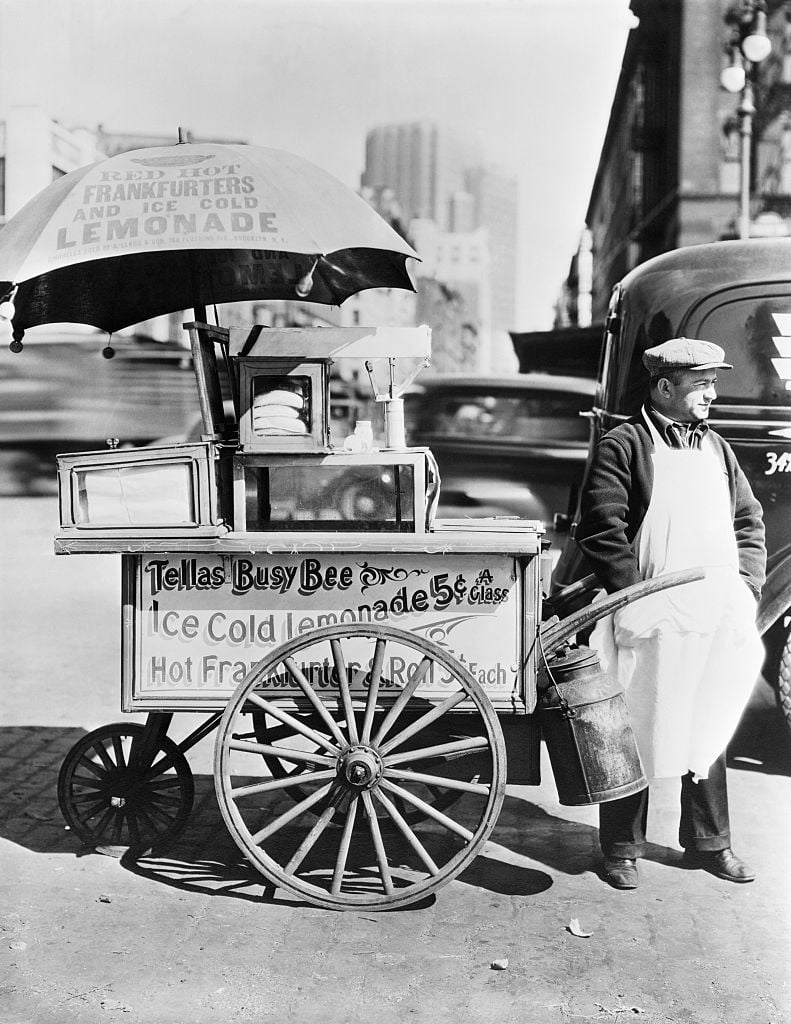
The first hot dog carts arrive, with sausage vendors originally offering gloves to patrons so they won’t burn their hands on the hot meat, according to Newsweek. The legend goes that one day after a sausage vendor runs out of gloves, he is able to convince a neighboring vendor who sell bread to team up. The rest is culinary history.
Related: Best Hot Dog Stands Across America
1920: Ice Cream on Wheels
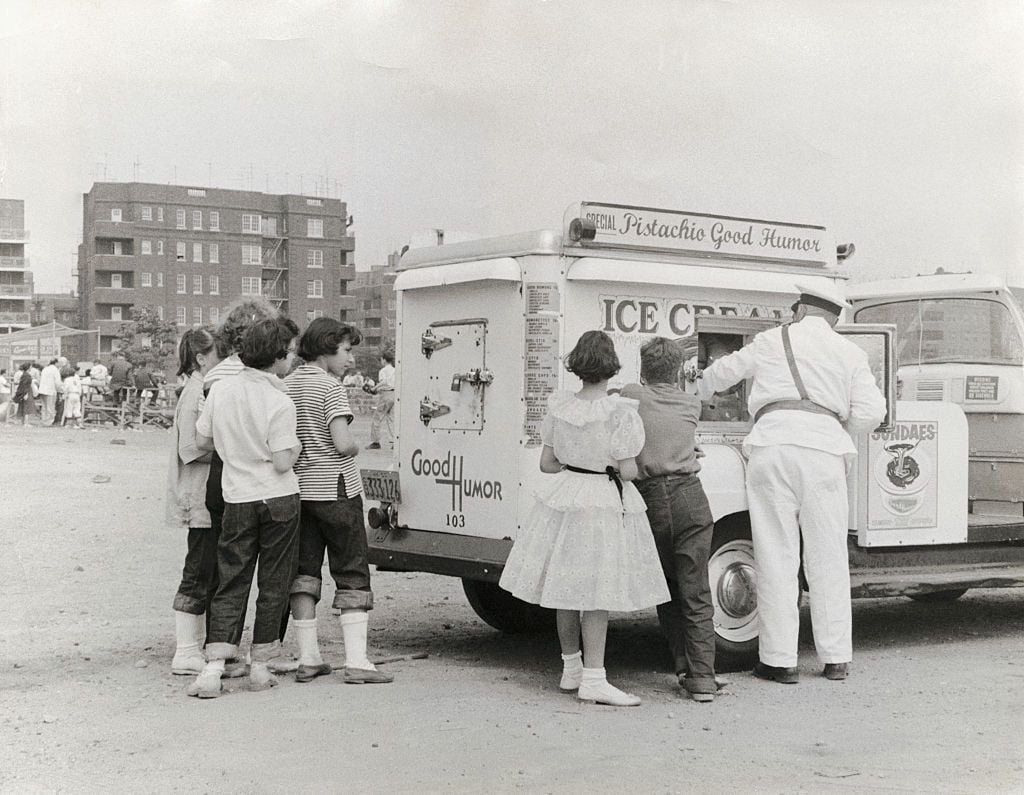
The first ice cream trucks pop up in Youngstown, Ohio, in 1920, when Harry Burt develops frozen ice cream on a stick and names it the Good Humor bar. To get his dessert in front of as many people as possible, he uses a dozen trucks driven by people in crisp white uniforms.
Related: The Surprising History of Ice Cream Trucks
Trending on Cheapism
1936: Meet the Weinermobile
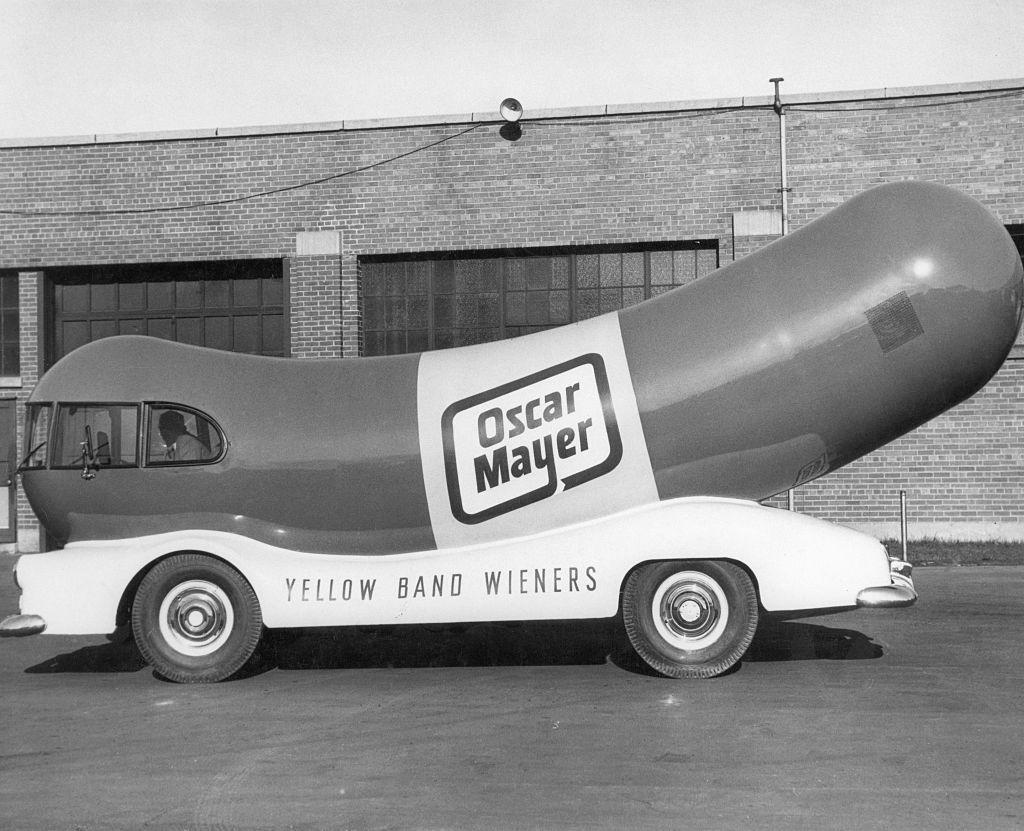
Carl Mayer, of Oscar Mayer, debuts the Weinermobile, a rolling 13-foot metal hot dog meant to take the company spokesperson around the streets of Chicago. The city’s own General Body Co. designed the first version, which had open sections in the middle and back.
Related: Can You Guess What Year These Popular Food Brands Made Their Debut?
1940: The Weinermobile Is Sent to the Garage
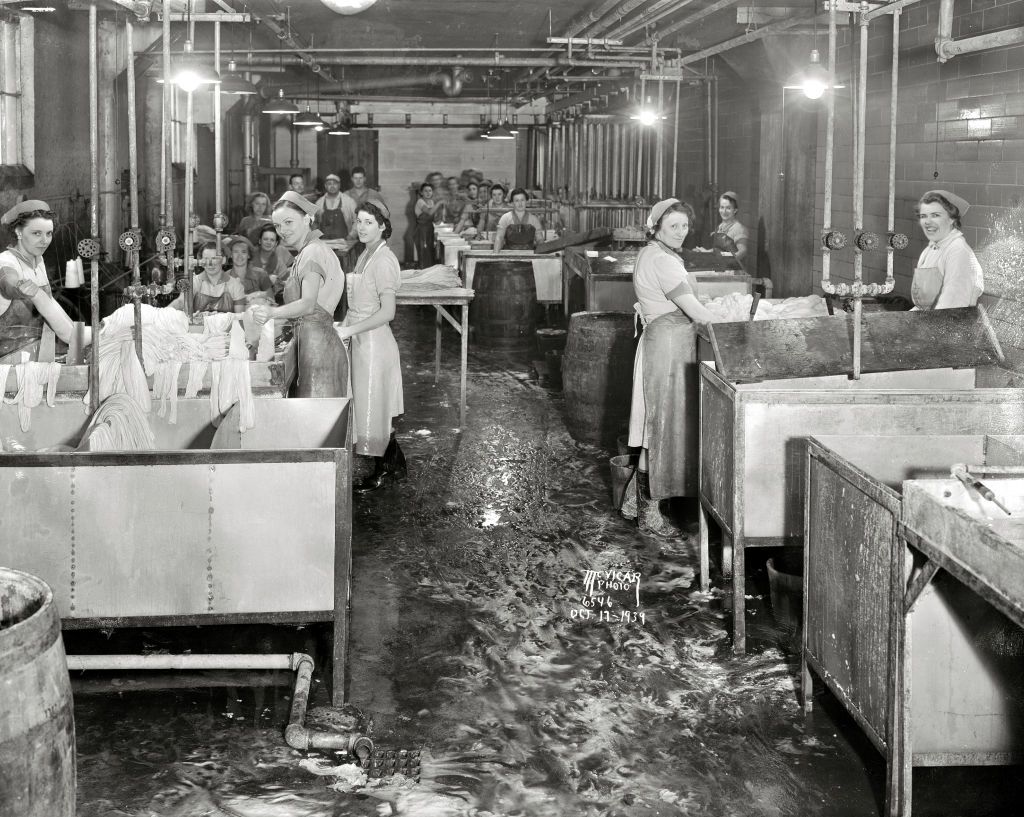
During World War II, the Wienermobile is retired briefly due to gas rationing. Oscar Mayer turns its efforts to canning meats for soldiers overseas.
Related: Taco Expert, Lego Builder, and Other Jobs You Won’t Believe Exist
1960s: The ‘Roach Coach’ Rolls Up

The first modern food trucks as we know them start selling items such as tacos and burgers to workers at construction sites and factories. At least in these early days, the trucks are sometimes called “roach coaches” due to their lack of cleanliness (real or perceived).
Related: Barbershops, Bars, and Other Businesses on Wheels Across America
Sign up for our newsletter
1974: The Taco Truck’s Time
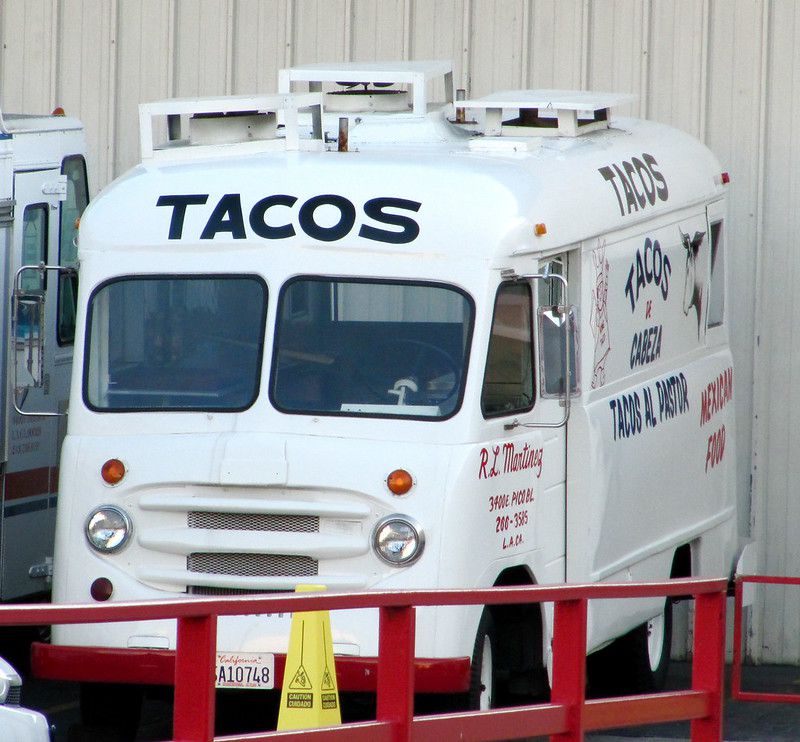
Raul Martinez converts an old ice cream truck into the nation’s first taco truck and parks it outside an East Los Angeles bar. The business, called King Taco, has since expanded to bricks-and-mortar locations throughout Los Angeles County.
Related: Tasty Taco Places Across the Country
1980: Food Trucks Go to College
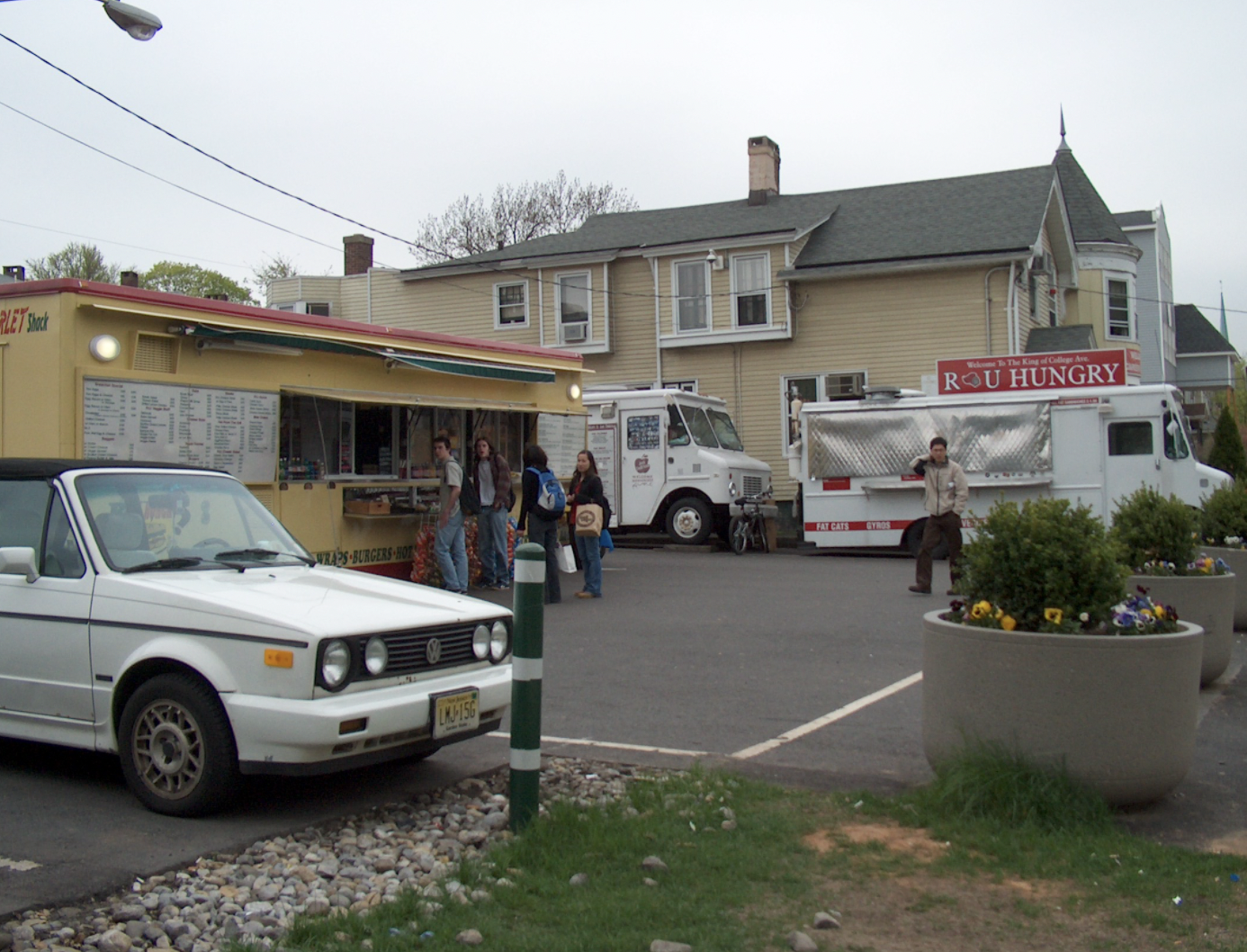
Food trucks, known to some as “grease trucks,” begin slinging hash at Rutgers University in New Brunswick, New Jersey, selling what was called “Fat Sandwiches” to college students — sub rolls filled with ingredients such as burgers, cheese, chicken fingers, french fries, mozzarella sticks, gyro meat, and bacon. They are still popular.
Related: U.S. Colleges with the Best Dining Experiences
2005: The Vendy Awards Premiere
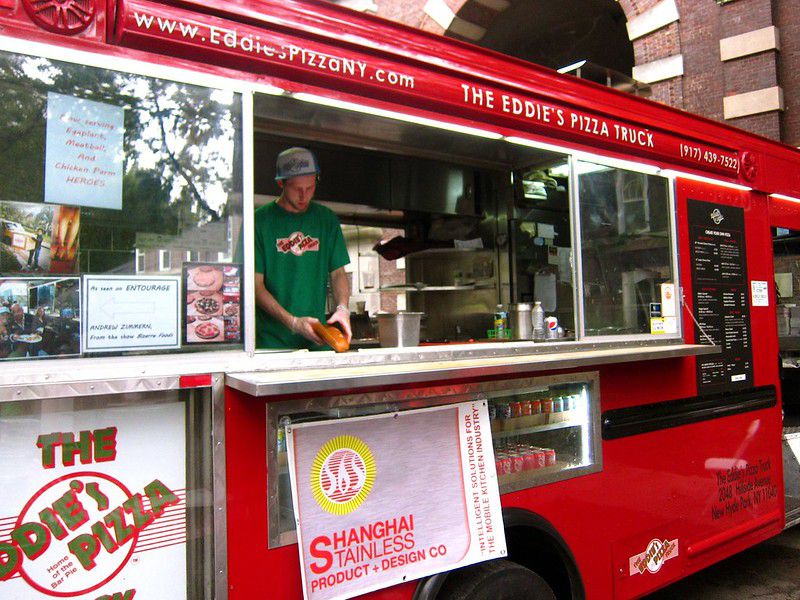
The Vendy Awards, a competition between food trucks, debuts as a friendly competition to highlight New York City’s diverse street foods and raise money to increase the number of permits, licenses, and overall commercial space available to vendors. The first competition took place in a food truck garage in downtown Manhattan with just four participants.
2008: Food Trucks Go Gourmet
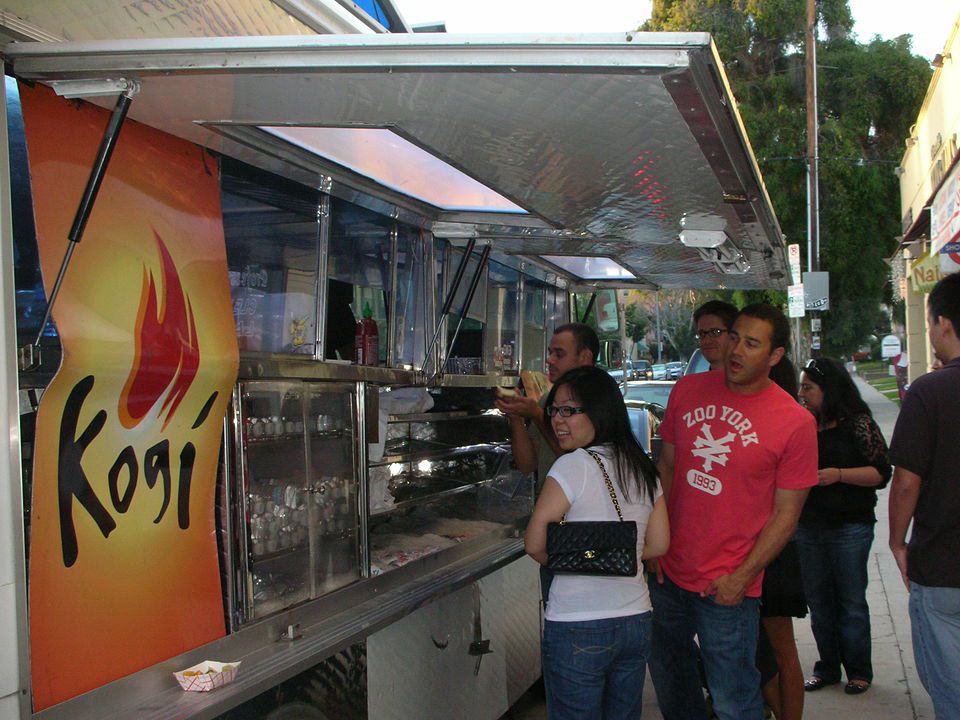
Kogi BBQ, a Korean and Mexican fusion food truck launched in Los Angeles by chef Roy Choi, kickstarts a modern trend in food truck respect. “Kogi set off a flavor bomb that would shake up the foundations of the industry so that street food would never be looked at the same way again,” Kogi says.
Related: Amazing Global Cuisines in U.S. Cities You Wouldn’t Expect
2010: Zagat Takes Note
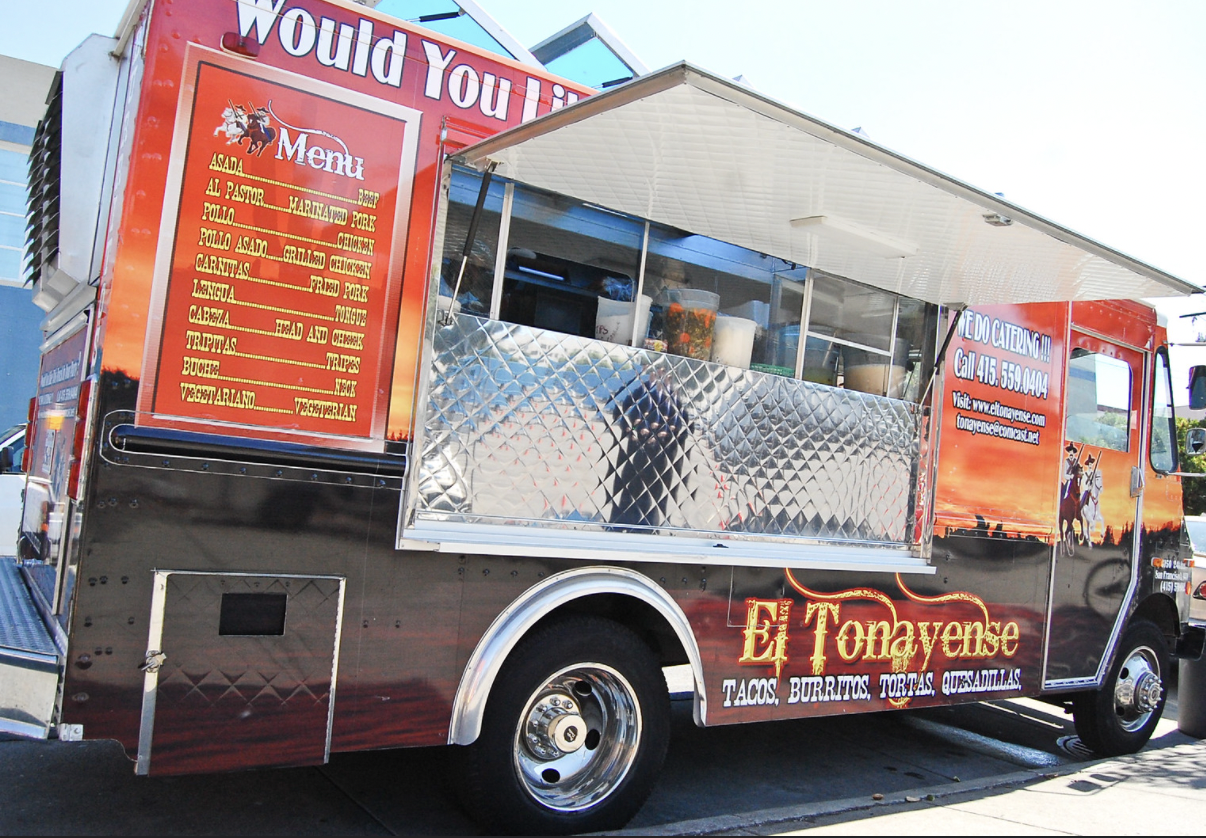
The Zagat guide announces it will review food trucks. One of the first user-submitted kudos for a truck goes to El Tonayense in California, which ranks No. 1 in Zagat’s 2011 “Best Bang for Your Buck” category.
Related: Great Cities for Food Trucks
2019: No Longer a Fringe Category
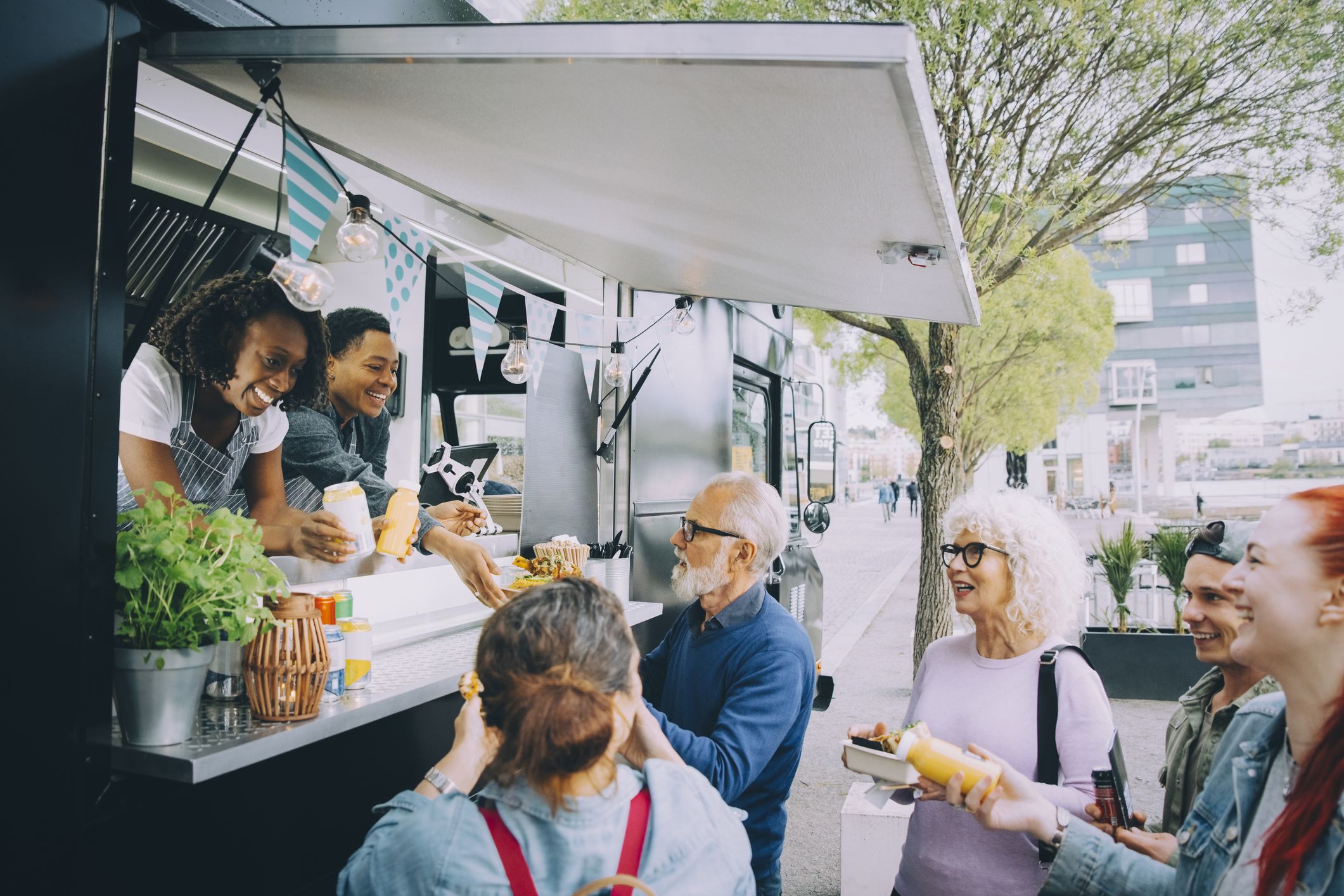
The final Vendy Awards are held, ending because organizers believe the industry has outgrown the need. “In 2005, the landscape of street food was really different in New York City — you didn’t have Smorgasburg, [or] the weekly markets that are everywhere,” Vendy Awards managing director Tatiana Orlov tells a reporter. ”In a way, the Street Vendor Project has really accomplished what they set out to do with the Vendy Awards, which was to raise the profile of street food in New York.”
